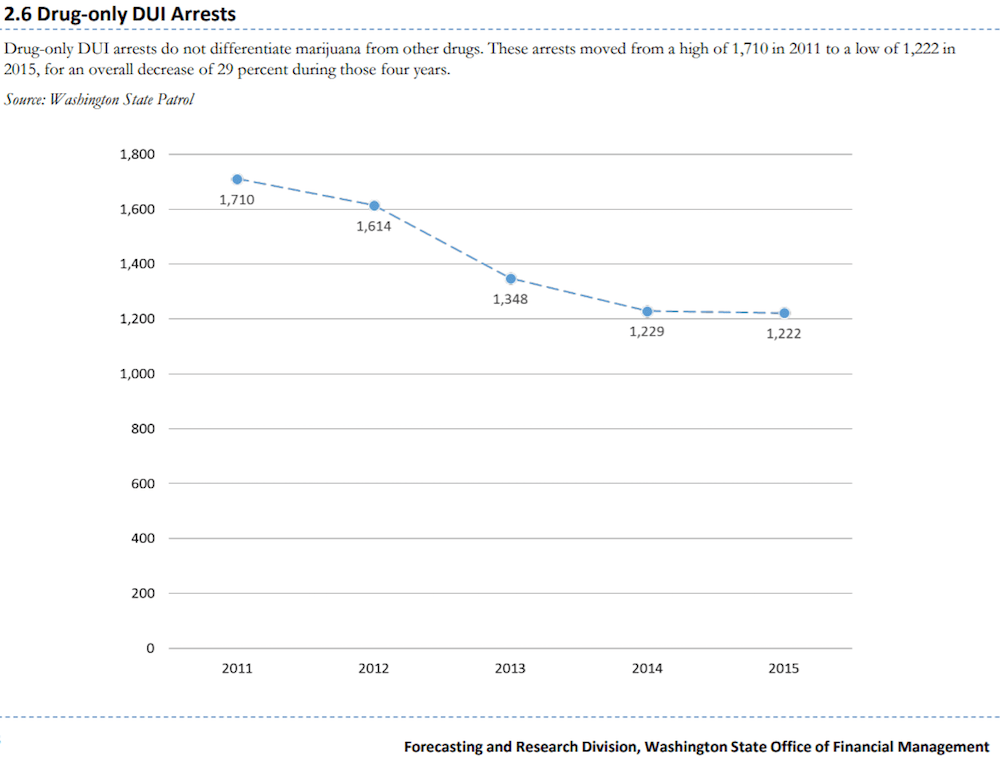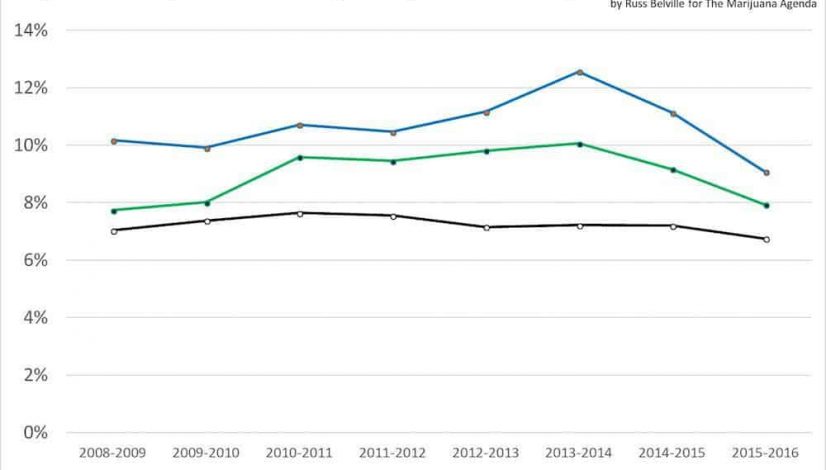Five Years into Marijuana Legalization: What Didn’t Happen
In January of 2013, Kevin Sabet was facing a new dilemma.
Never before had any prohibitionist had to fight back against an actual legalization regime. For years, Sabet and his kind had issued dire forecasts of the bleak hellscape America would become under the seductive addiction to the devil’s lettuce. Now those predictions would be put to the test in the real world.
So, let’s take a look back to those halcyon days of 2013 when weed had barely been legalized and was not yet legally sold (that didn’t happen until 2014), to see how Sabet’s predictions panned out.
FEAR: “[Legalization of marijuana] would open the floodgates to more addiction.”
FACT: Legalization of marijuana has led to lower use rates among teens, less opioid addiction and death.
Sabet opined in an October 2013 op-ed at CNN that “legality means commercialization, normalization and wider access and availability that lead to more use and addiction.”
According to the 2015-2016 State-Level Estimates contained in the National Survey of Drug Use & Health, marijuana use has increased in Colorado and Washington following their legalization. However, the increase is found mostly among the adults who are now legally able to use marijuana.

Russ Belville / National Survey on Drug Use & Health
Use among people aged 12-17 has actually declined since those states began legal marijuana sales in 2014. That’s despite the other parts of Sabet’s prediction coming true. In 2015-2016, far fewer teens in Colorado and Washington believed monthly marijuana use was risky and disapproved of peers’ marijuana use.
FEAR: “[Marijuana] users will incur a huge cost to society.”
FACT: Tax revenue from legal marijuana has topped well over $1 billion.
“We know, for example, that every $1 gained in alcohol and tobacco tax revenue costs society $10,” Sabet warned GoLocal Worcester in Massachusetts. “Why should we expect marijuana—which combines the intoxicating properties of alcohol with the lung damage associated with smoking—to be any different?”
Maybe because alcohol and tobacco are both toxic and addictive, while marijuana is not? Maybe because people swapping productivity-killing pills for medical marijuana are better workers?
By Sabet’s reckoning, Colorado and Washington should have incurred over $10 billion in social costs from legal weed—something even he won’t try to claim. Instead, they’re using pot money for public benefit, like building schools.
FEAR: “Marijuana intoxication doubles your car crash risk.”
FACT: Colorado and Washington traffic fatalities, non-fatality crashes, and marijuana DUI charges remained steady or declined since legalization.

Washington State Office of Financial Management
Sabet told Gov. Jennifer Granholm on Current TV back in 2013 that the British Medical Journal published a study showing double the car crash risk for drivers who test positive for THC.
But other studies have shown that if you adjust for age, gender, and alcohol use, positive THC detection has no bearing whatsoever on crash risk.
“One possibility is that people who smoke marijuana share qualities—being young, male, and risk-taking,” wrote researchers back in 2009, “that would increase their risk of road traffic accidents even in the absence of marijuana use.”
“For marijuana, the unadjusted odds ratio was 1.25, but after statistically adjusting for gender, age, race/ethnicity, and driver alcohol concentration,” the National Highway Traffic Safety Administration confirmed in 2017, “there was no significant contribution to crash risk from any drug.”
FEAR: “Today’s marijuana is 10 times more dangerous than the marijuana of the ‘60s that many parents smoked in their dorm rooms.”
FACT: Nobody’s parents were smoking 1-to-3 percent THC marijuana back in college!
Sabet told Salon that whopper based on federal potency data from the 1970s that sampled dried-out ditchweed sitting in hot evidence lockers. That data does not show any THC values above 3 percent until 1994, with values as low as 1.38 percent.
Yes, marijuana is stronger these days, but it’s not as if Cheech & Chong in the 1970s or Snoop & Dre in the 1990s were smoking schwag. As I’ve shown above, those “dangers” Kevin Sabet predicted—greater addiction, social costs, and car crashes from today’s legal not-your-parents’-Woodstock-Weed—just didn’t materialize.
Sabet told me personally as he toured Oregon during our 2014 legalization push that the more the public sees of the results of marijuana legalization, the more their opinions will change.
Given that national public support for legalization is at 68 percent and Oklahoma just passed California-style medical marijuana, I guess we’ll have to give him that one.
The post Five Years into Marijuana Legalization: What Didn’t Happen appeared first on High Times.


